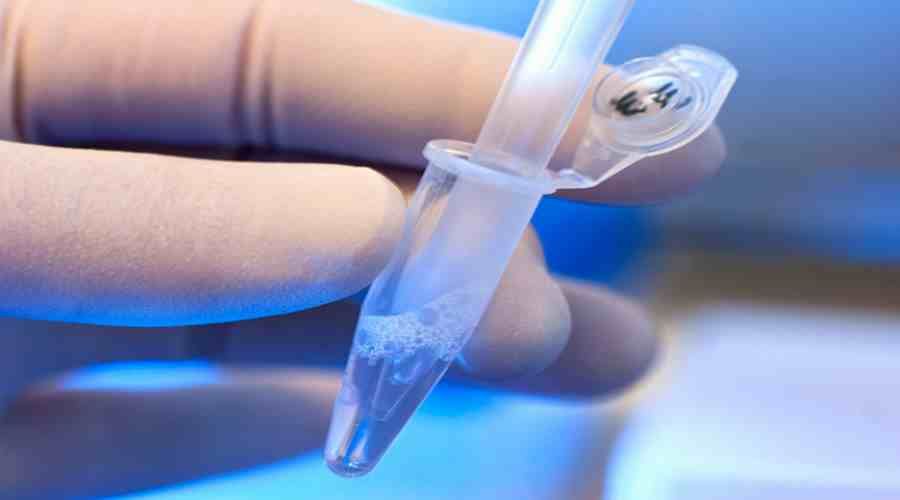Polish scientists have developed a new DNA analysis technique
The method combines the advantages of two popular DNA analysis techniques and can be used on commonly available equipment. The technique was developed while working on a record-setting genetic testing instrument that can complete a DNA test in less than a quarter of an hour.
Molecular diagnostics is playing an increasingly important role in today’s medicine: in the detection of diseasesob genetic, monitoring the effectiveness of anti-cancer therapies, in the fight against aggressive bacterial infections, where early identification of the bacterial species threatening the patient may decide his life.
A new technique for DNA analysis: synergistic PCR (sPCR) was developed at Curiosity Diagnostics (CD), a member of the Scope Fluidics group, with the participation of the Institute of Physical Chemistry of the Polish Academy of Sciences (IPC PAS) in Warsaw. The method (detailedolarly described in cooA scientific publicationoin CD and IPC PAS in a scientific journal "Scientific Reports") combines the advantages of dwoch currently the most popular techniques for analyzing the genetic code and can be applied on commonly available apparatus.
– Our proposed DNA testing technique was born during the development of a novel analytical instrument, PCR|ONE, with which weorego genetic code testing can be completed in as little as seven minutes. This is the time more than tenfold krotier than required in classical solutions – mowi prof. Piotr Garstecki of the IPC PAS and CD.
As we read in a communication sent by the IPC PAS, probkets submitted for DNA testing usually contain so little genetic material that its analysis by typical laboratory techniques would not be possible. After purification of probki from contamination, so the first step is to increase the amount of genetic material, often by up to a billion times. Polymerase Chain Reaction (PCR) is used for this purpose.
The PCR reaction involves cyclic heating and cooling of a solution containing the genetic material to be duplicated and the appropriate reagents: An enzyme called polymerase, the nucleotides necessary to build the DNA strand, and primers, i.e. krotki DNA fragments capable of attaching to the beginning and end of the multiplied code fragment (e.g. of a particular gene).
– Each PCR reaction cycle consists of twooch phases: heating and cooling. In the first phase, at a temperature of approx. 95 degrees Celsius, hydrogen bridges break and the hitherto double-stranded DNA chain splits into two single strands. In the cold phase, at a temperature of approx. 50 degrees, primers from the solution attach to the appropriate sites on the strand, after which the polymerase builds a complementary strand between them. After the completion of each cycle of double-stranded fragmentsoin the DNA is (under ideal conditions) twice as much as at the beginning, informs the IPC PAS in a message sent to PAP.
The PCR reaction is used zarowell for the detection of specific fragmentsoin the genetic code, as well as to estimate the original amount of genetic material. Quantitative measurements are usually carried out using a (analog) technique known as real-time PCR. The analog PCR technique is relatively simple, but because of the sensitivity of the PCR reaction to even single molecules of contaminants, it requires careful, continuous calibration of the.
Another method is digital PCR. According to the IPC PAS, probce is divided into tens or hundreds of thousands, and often even into millions of parts that are equal in volume. Then, in each part, a procedure is carried out to duplicate the genetic material and check whether a fixed change appears. The advantage of the digital technique is that there is no need to calibrate the apparatus. Due to the requirementsog roof carrying out a huge number of reactions, however, the equipment for testing is quite expensive and in laboratories is much less common than the apparatus for analog PCR.
Synergistic PCR – a technique proposed by CD and IPC PAS – combines the most important advantages of analog and digital methods. To obtain reliable measurements, probka is sufficient to dilute into only a dozen, at most several dozen parts of the. The method designed in this way does not require calibration.
– The small number of sub-volumes, characteristic of our technique, has a concrete practical translation. This is because it means that standard multiwell plates, used in popular analog PCR devices, will suffice for the analysis, emphasizes IPC PAS PhD student Paweł Dębski, ktory developed the sPCR method.
Due to the small number of divisionoin probki, the sPCR technique is easier to perform and somewhat faster than the digital varieties. W poroHowever, compared to analog techniques, it requires more reagentow. According to Warsaw scientistsow for this reason it will not replace the analog variety. However, it can be a complement to it, since, as it does not require calibration, it will allow lab technicians to check the accuracy of measurements independently and regularlyoin analog.
– The DNA testing technique we developed has been patented. However, we want to emphasize the freedom to use it for non-commercial purposes. And since it uses a typical, popular genetic testing apparatus, to start using it you only need to reach for our article,” points out Prof. Garstecki.
The sPCR technique was developed as an integral component of PCR|ONE, the Scope Fluidics group’s innovative device for rapid DNA analysis. As a result of technical and analytical improvements, the PCR|ONE prototype units currently under test are capable of completing DNA testing in under a quarter of an hour, and perform the PCR reaction itself in just seven minutes. The first PCR|ONE units will probably hit the market within 2-3 years.


